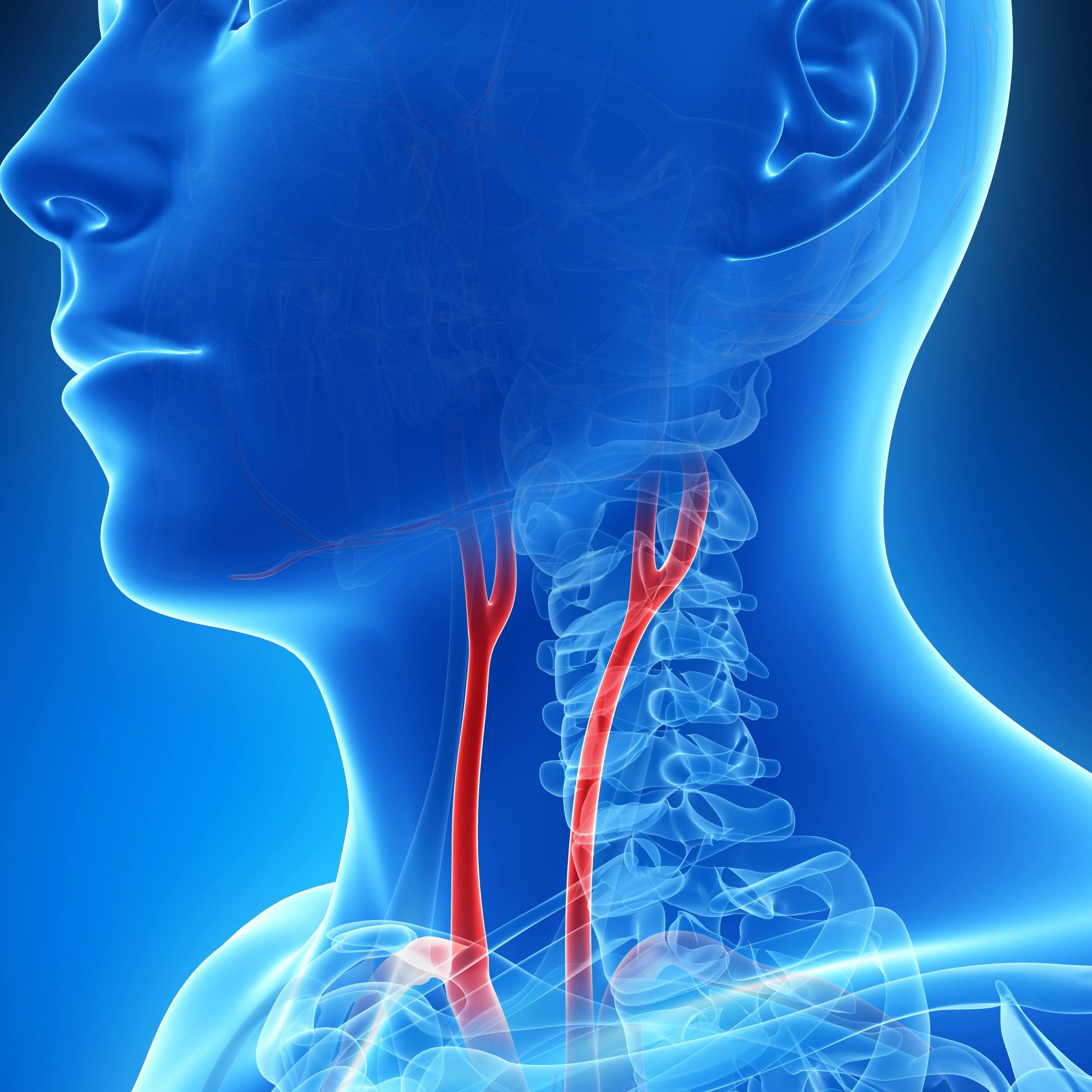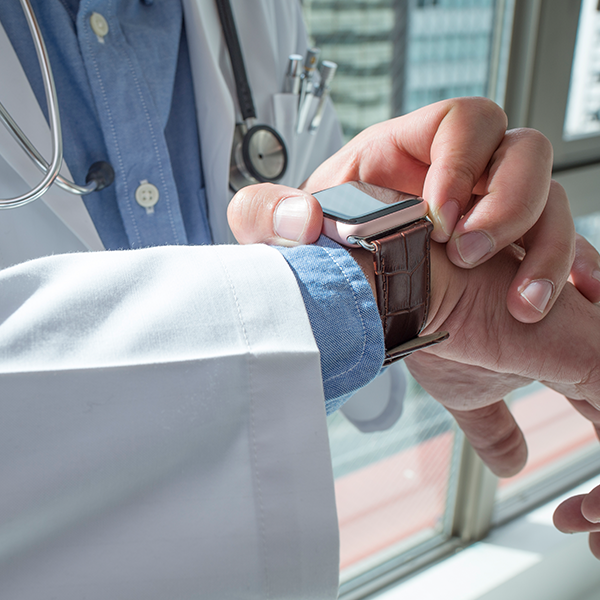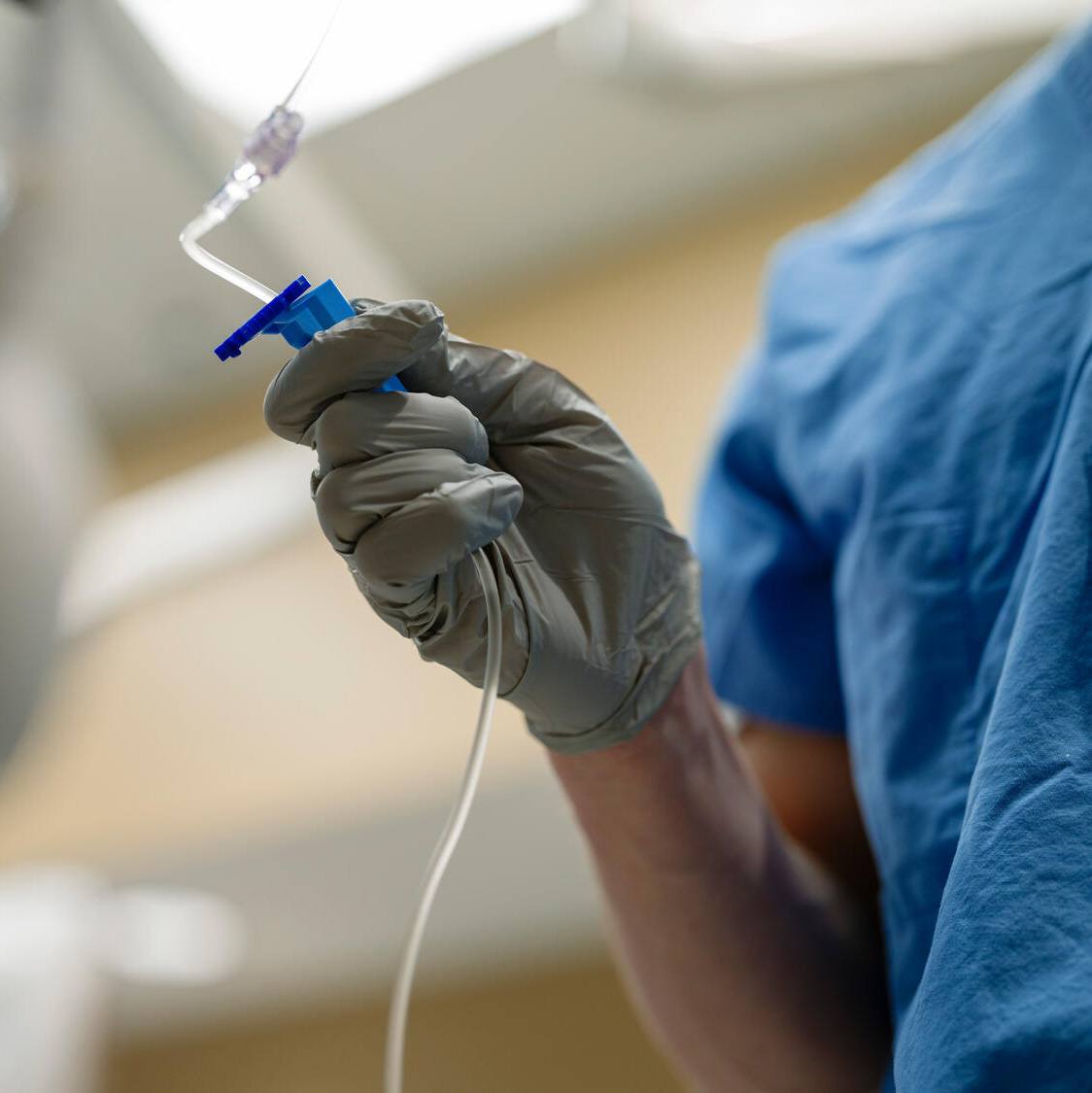-
Early-stage clinical trial provides hope for patients with traumatic spinal cord injuries

Early research at Mayo Clinic is a step toward hope for a future treatment for patients with traumatic spinal cord injury.
The research in this article discusses the experience related to the first case in a phase I safety study of mesenchymal stem cell treatment for spinal cord injury. The case study, found in Mayo Clinic Proceedings reports that stem cell intervention, which took place after standard surgery and physical and occupational therapy, restored some function in a patient with spinal cord injury.
Mohamad Bydon, M.D., a Mayo Clinic neurologic surgeon and the lead author, cautions that each patient is different, so it's too early to consider stem cell therapies as a treatment or cure for paralysis from spinal cord injury. Dr. Bydon adds that much like early trials in general, the stem cell trials are going to show variable response rates – with some moderate responders, some superresponders and some non-responders.
"While in this case, the first subject was a superresponder, others did not respond in the same manner. We do not yet understand all of the necessary biology needed to achieve neurological recovery in paralyzed individuals," says Dr. Bydon. "One of our objectives in this study and future studies is to better delineate who will be a responder and why patients respond differently."
Those first steps
For the past 10 years, Chris Barr had gone to San Francisco’s Ocean Beach near the Golden Gate Bridge every week to ride the waves and swim. The ocean was Chris’ place of peace as a former lifeguard and competitive swimmer.
Chris doesn’t remember what happened that day in February 2017, but people nearby recall him falling off his surfboard headfirst into a sandbar.
Chris’ neck was broken in eight places. Unconscious, he floated facedown in the cold Pacific as his lungs filled with water. Luckily, a close friend, Chet White, happened to be resting from the waves on the shore and sprang into action when he saw a surfer in distress — though he didn’t recognize the man as Chris at first.
“I ran out, maybe a hundred yards, and grabbed this lifeless body by the shoulder,” Chet says. “Then 20 feet from the edge of the water another surfer came up and helped pull Chris the rest of the way.”
A passing beachcomber, who happened to be a nurse, met them at the shore and began CPR. Chris was not responding. His face was blue and almost unrecognizable to Chet, who’d known Chris for 30 years. They had traveled the world on surfing adventures together, and Chris was the best man at his wedding. When paramedics arrived and transported Chris to a nearby hospital, Chet wasn’t sure if he’d see his friend again.
Pull the plug
When Chris’ wife, Debbie, arrived at the hospital, she didn’t yet understand the severity of the accident. It would be several days before doctors met her outside of his room to explain her husband’s nerves were not responding. Chris was paralyzed below his neck and faced the possibility of being on a ventilator for the rest of his life. She knew her husband as an active, dynamic man — this was not how they imagined their future together.
“No sooner did I finish talking with those doctors than I walked into the ICU and Chris, who was intubated, mouthed to me ‘pull the plug,’” Debbie says. “I burst into tears and asked him for more time. It seemed like there was no hope.”
Over the next several days friends arrived from around the country to lend their support. Debbie asked each of them to talk to the team of doctors about any options Chris might be able to pursue, to ask questions she may have overlooked.
“Chet was angry,” Debbie says. “He didn’t want to give up. He knew there were new advances in technology and science happening all the time, and from the moment he talked to Chris about stem cells, it was game on.”
Plateauing progress
Before stem cells and other regenerative technologies could be explored, however, Chris had to finish his recovery in the hospital. After a month, he no longer needed a respirator. Despite other advances, he remained paralyzed, only able to move his toe. His muscles were atrophying, and he had lost 40 pounds.
Over the months while continuing his recovery at home, Chris began to see improvement. With intensive rehab he regained some movement and strength in his limbs, but Chris still struggled to understand exactly what he would be capable of in his new life.
“I could move a few things,” Chris says. “Nothing was really functional, but I was encouraged by the progress. Six months after the accident, however, all progress stopped.”

Mohamad Bydon, M.D., a neurosurgeon at Mayo Clinic, learned about Chris’ case after Chris was first hurt. Dr. Bydon is a leading researcher in the use of regenerative medicine to restore function to people who have experienced traumatic injuries of the spine. When Chris’ progress plateaued, Dr. Bydon was ready to help.
“We want to intervene when the physical function has plateaued, so that we do not allow the intervention to take credit for early improvements that occur as part of the natural history with many spinal cord injuries,” Dr. Bydon says. “The hope is that we will have novel treatments for spinal cord injuries in the coming years that will be different from what we have today.”
At nine months after his injury, Chris became patient No. 1 of 10 enrolled in an FDA-approved phase 1 clinical trial at Mayo Clinic using a tissue-derived stem cell therapy to treat humans with traumatic spinal cord injury.
The goal of the phase 1 clinical trial is to research feasibility, safety and dosing of the stem cell therapy. It was made possible through a multidisciplinary team, including the departments of Neurologic Surgery, Neurology, and Physical Medicine and Rehabilitation, as well as the Center for Regenerative Medicine; the Department of Laboratory Medicine and Pathology’s Immune, Progenitor and Cell Therapeutics Lab; and the Neuro-Informatics Laboratory. Support from Mayo Clinic benefactors, combined with additional internal and external grants, ensured the clinical trial would take place.
The study team included Dr. Bydon; Wenchun Qu, M.D., Ph.D., a physical medicine and rehabilitation physician; and Allan Dietz, Ph.D., a transfusion medicine scientist who leads the team that developed and manufactures the cells, among many others.
"Mayo Clinic has been taking the lead in translating decades of research and treating neurological conditions,” says Dr. Qu.
Between 250,000 and 500,000 people worldwide suffer a spinal cord injury each year, often with life-changing loss of sensory and motor function, according to the World Health Organization. Up to 90% of these cases are from traumatic causes. Currently, there is no way to reverse the devastating effects of paralysis from spinal cord injuries.
A memorable walk
In January 2018, 11 months after his injury, Chris was surrounded by a group of close friends who came to surprise him for his birthday. They gathered at Mayo Clinic in Rochester, Minnesota, to recognize two milestones — a birthday many thought Chris wouldn’t reach, and the injection of 100 million stem cells in his lower back.
“There was improvement in literally two weeks,” says Chris. “We did leg tests, walk tests, finger motor tests. Most of them improved by 25% to 50% — some were over 100%. It was pretty wild.”
Over the next 18 months, Chris was observed as he continued to undergo physical and occupational therapy back at home in California. Researchers dubbed him a super-responder. He showed improved grip and pinch strength, manual dexterity, sensory scores, and progress toward independent walking.
Months later Chris would return to Mayo Clinic for the team to evaluate progress again. He took his first steps alone as he went to shake Dr. Bydon’s hand. They decided it was time to celebrate.
“Dr. Bydon’s team is the A-team, the dream team,” Chris says. “They’re the best from every school and every country in their discipline. I got to actually walk around the table and shake their hands. They were blown away. It was pretty emotional for them and us.”
Says Dr. Bydon: “The recovery that Chris had was beyond our expectations. Being able to see that is very gratifying.”
More first steps
Further study is needed to scientifically verify the effectiveness of stem cell therapy for paralysis from spinal cord injury. It is uncertain when or if this procedure will have FDA approval for routine clinical care.
“I don’t know if these are baby steps or Neil Armstrong steps — but they are absolutely steps in the right direction,” Chris told ABC’s Good Morning America in a segment about his story.
And they’re steps Chris never thought he’d get to take on his own again.
“The stem cell trial is such a huge part of my story,” Chris says. “The hopelessness of paralysis is unlike anything you can imagine. This … is hope.”
This article originally appeared in Mayo Clinic Magazine.







